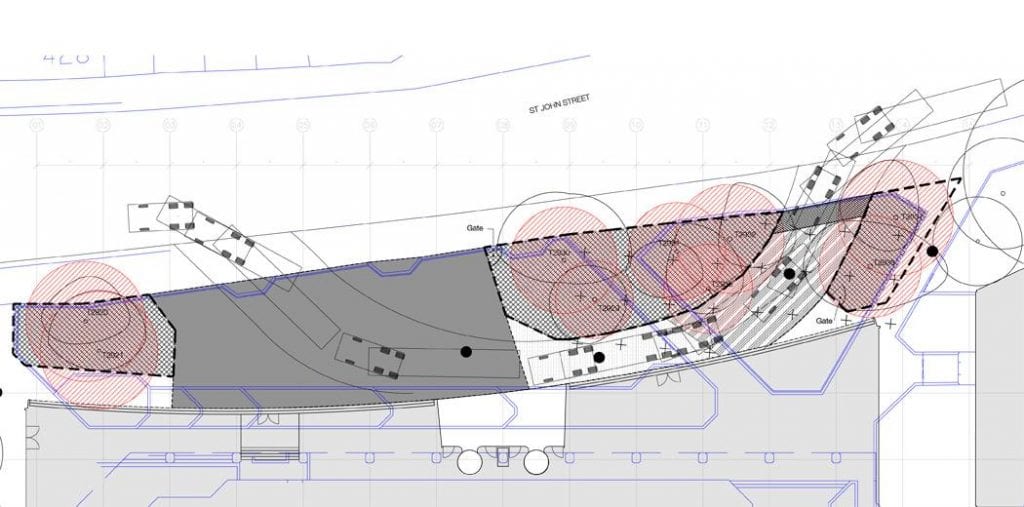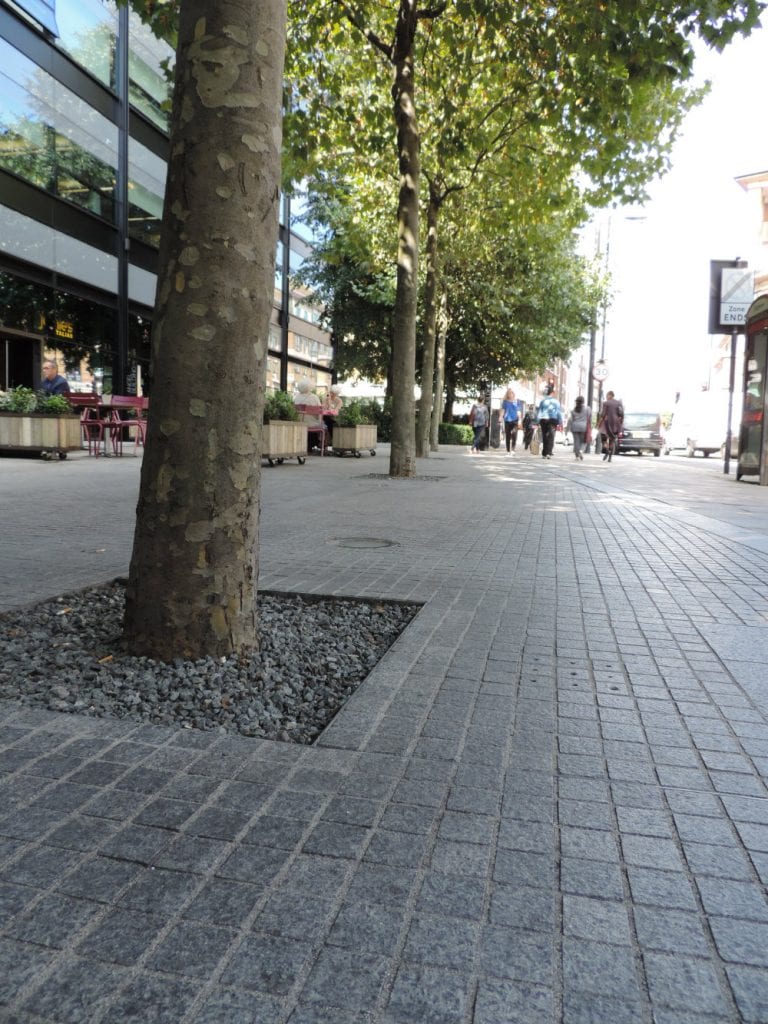The preservation of existing large specie trees, and the planting of new ones, can help developers gain planning permission for urban developments much more readily. As part of standard planning permission for most urban developments, local authorities require site improvement and mitigation of potential damage to natural settings. Designers and developers can implement large specie trees to address such planning requirements. And when they’re shown to be planted in proper urban tree planting systems that will ensure the long-term health and maturity of the tree, authorities are much more likely to provide planning permission with less conditions.
Retaining existing mature trees within development schemes when possible demonstrates the protection of the local setting. Which combined with new planting proposals, creates significant aesthetic and physical amenity and increased biodiversity – all which will improve the likelihood of gaining planning approval.

A case study example of where this approach has worked well in practice, is the Angel Building in Clerkenwell, a suburb of London, UK. This is an excellent example of the retention and planting of large specie trees in a highly constrained urban development.
Angel Building Case Study
The Angel Building is the reinvention of an unloved early 1980s commercial building located in North London. The old building was on a site surrounded by mature trees that conveyed significant benefits on the local character of the streetscape.
Strong policy direction from the conservation and urban forestry departments at the London Borough of Islington benefited the project. In addition, forward-thinking developer (Derwent London) advised by an integrated design team including landscape architect J&L Gibbons and GreenBlue Urban, helped move the project forward successfully.
The site was comprised of the old commercial building set back from the sidewalk and bordered by large mature lime trees planted in the 1980’s along the adjacent streets.

During initial discussions regarding planning approval, a robust standpoint with clear parameters for the development were established by planning department. These included ensuring…
- the building remained setback from the sidewalk
- all important existing trees were retained and suitable protected during construction
- new large specie trees were planted to provide betterment to the public realm
To ensure the development was still financially and physically viable, the local authority made several concessions to contribute to making the final project a success. These included…
- allowing the removal of some of the existing trees that were planted too close to the original building
- allowing incursion into the root protection area of the mature trees to facilitate a construction access route
- This required the production and approval of a method and regular reporting coordinated by the landscape architect. A heavy grade cellular confinement system was laid across the surface above the tree root zone, and filled with a specific medium to avoid changing the soil pH. It was contained by concrete curbs that were pinned rather than fastened to the ground, to reduce effects on the tree roots. The surface was checked regularly throughout construction to ensure ground compaction was minimal, as this was critical given it was in place for an entire year with 25 to 30 deliveries a day.
- accepting an increase in the height of the new building to ensure the protection of the mature trees and also the view towards a heritage clock tower on the opposite side of the road
The exact position of the new building’s front edge was established largely by the root protection areas of the trees. To ensure the building was not going to have an adverse effect on the trees, trial holes were undertaken to prove roots were not present and to provide confirmation for the building layout in the planning application.


Care was taken to ensure the newly planted trees that replaced the ones removed during construction would be appropriate for the location. For example, given the presence of a bus route running next to the development, semi-mature plane trees with 16 foot (5 meter) clear stems were selected. This meant that the trees would not require repeated corrective maintenance in order to prevent them from becoming an access issue for the buses.
A tree strategy that preceded the establishment of utility corridors was adopted to provide a larger root zone for the trees to thrive in
Throughout design and construction, everyone involved in the project were fully integrated to ensure its success. Information on the value and importance of the tree preservation was distributed to those working at the site, to help ensure the measures put in place to protect the existing trees were respected and adhered to. Planning approvals and condition discharges were constructively and successfully agreed to, improving the development potential and saving the developer money.

After the completion of the project, the municipality was responsible for the ongoing maintenance of the trees. Due to the poor soil conditions, the trees that were retained required an underground irrigation system to promote continued health. To date, the trees receive regular monitoring, and all appear to be in good health.
The Angel Building redevelopment, like many similar developments, proved to be a benefit to both the developer and the municipality, and is an exemplary approach to development in constrained urban settings, particularly with regard to retaining and supplementing mature trees to assist with planning approval.
Providing for New Urban Trees
Trees in urban areas require nothing more or less than any other trees – a sufficient supply of uncompacted soil, adequate water and oxygen, and protection from pedestrians and vehicles in their establishment years. But it becomes hard to provide these necessities within the urban setting.
Since 1992, GreenBlue Urban have been developing systems to solve these challenges. To date, our urban tree planting systems, collectively referred to as the ArborSystem, have helped over 389,000 urban trees reach maturity.
Soil cells offer uncompacted soil for trees being planted in hardscape areas, while underground irrigation and aeration directs water and oxygen under the paved surface into the tree rooting zone. Root management ensures that tree roots thrive in the soil provided and avoid hardscape surfaces and any nearby utilities, while tree grates and guards offer new trees protection during their establishment years and beyond.
These systems, coupled with the implementation of a sustainable urban drainage system, will provide any development with a robust green infrastructure benefit that will greatly increase the chances of gaining planning approval.




